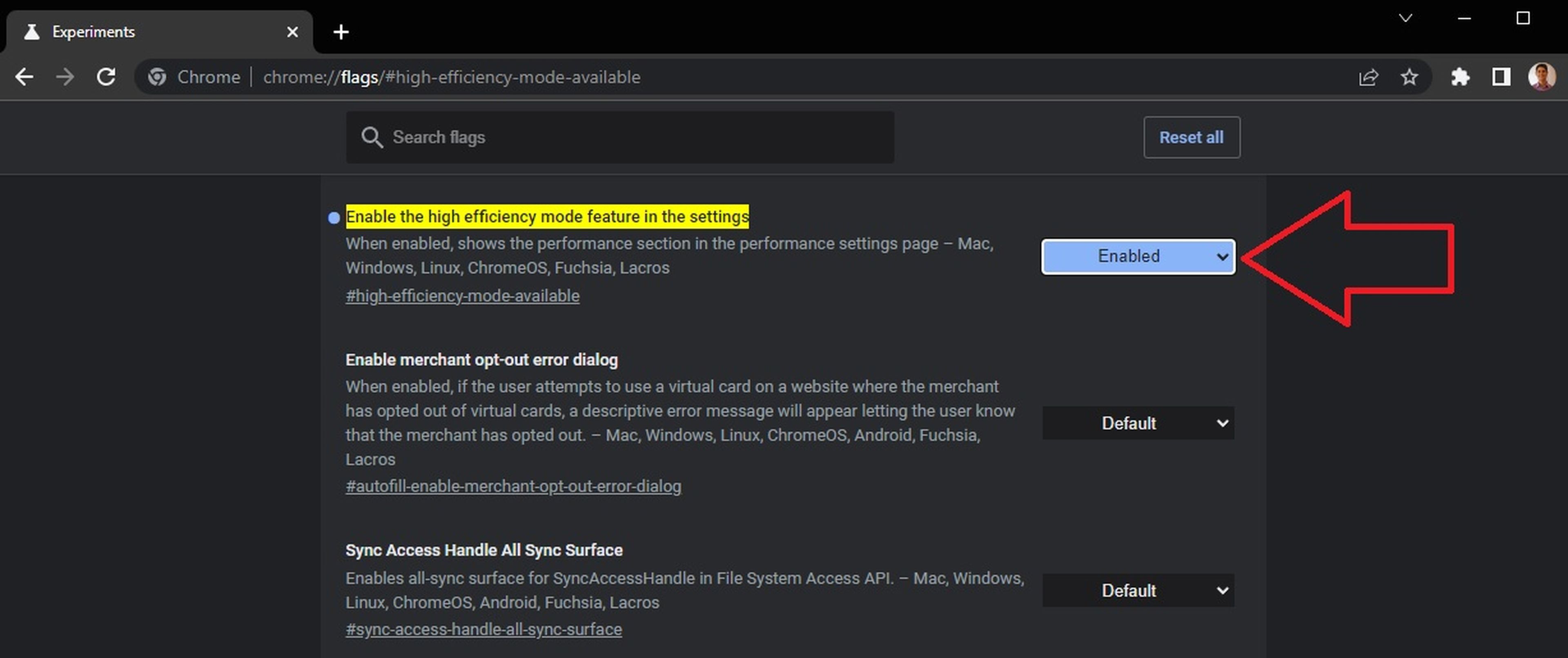[ad_1]
It is already a meme on the internet, but it is still true: the browser Chrome’s Google it has long been criticized for being a hog of system resources. Both RAM and processes. Have Chrome it was only a privilege for those with many cores and many gigs.
For this reason, Chromium has been busy working on ways to free up memory and keep things running smoothly when users have multiple windows and tabs open. And, above all, for those who do not have powerful and up-to-date computers.
The latest effort in this direction comes in the form of the Memory saver, a new feature that disables open tabs that you haven’t used in a while so that the ones you are using offer the smoothest possible experience.
With Memory Saver turned on, inactive tabs stay open and when you access an inactive tab, it automatically reloads.

Google claims that new Memory Saver feature means Chrome can use up to 40% less memory. The company claims that the new performance tweak is especially good for keeping active video and gaming tabs running smoothly.
Google is rolling out memory saver mode in the coming weeks globally to Windows, macOS and ChromeOS, but you may not have it yet. Fortunately, if you don’t have the new Settings and Performance menu visible, you can manually enable it using the experimental Chrome Flags features.
How to enable memory saving mode in Chrome
Before you continue, make sure to check all important tabs and save anything important you’re working on in Chrome, then update your browser to the latest version available (109.0.5414.119).
It is very important that you have updated Chrome to the latest version available. Once this is done, you have to do the following:

- Start Chrome and paste the following in the address bar: “chrome://flags/#high-efficiency-mode-available”.
- Next to “Enable the high-efficiency mode feature in settings”, Change the default setting to On, and then restart Chrome.
- Now Paste the following in the address bar: “chrome://settings/performance”.

- In the new “Performance” menu, turn on the switch next to Memory saver to activate it.
- Restart Chrome for the changes to take effect.
Once this is done, the Memory Saver will work in the background to free up memory for other tasks. You can control the mode at any time by clicking Settings in the three-dot menu and selecting the Performance submenu.
It is also here where you can prevent Chrome from disabling specific sitesusing the Add button next to Always keep these sites active.
Google warns that there are some settings and activities that can prevent the deactivation of tabs. These include active audio calls or active video playback, screen sharing, page notifications, active downloads, etc.
How to turn on power saving mode in Chrome

Other than Memory Saver, Google is also rolling out a Power Saving mode which makes Chrome automatically limit battery-consuming tasks when the battery reaches 20 percent.
It does this by slowing down image capture and other background tasks, so you may notice changes in gaming and video performance. Google advises turning it on to extend your device’s battery life on a long road trip or plane trip.
mode can be enabled or disabled on the same “Performance” page of Settings or by putting this in the address bar: “chrome://flags/#battery-saver-mode-available”. If you don’t see it and don’t want to wait for it to appear, go to Chrome’s options and click “Turn on battery saver mode on settings” and then restart your browser.
[ad_2]





Leave a Reply